I posted about the “earthtainer” concept in this post and built myself a crude ‘bucket’ earthtainer as a ‘proof of concept’. Despite having made some elementary mistakes I believe the experiment is an unqualified success.
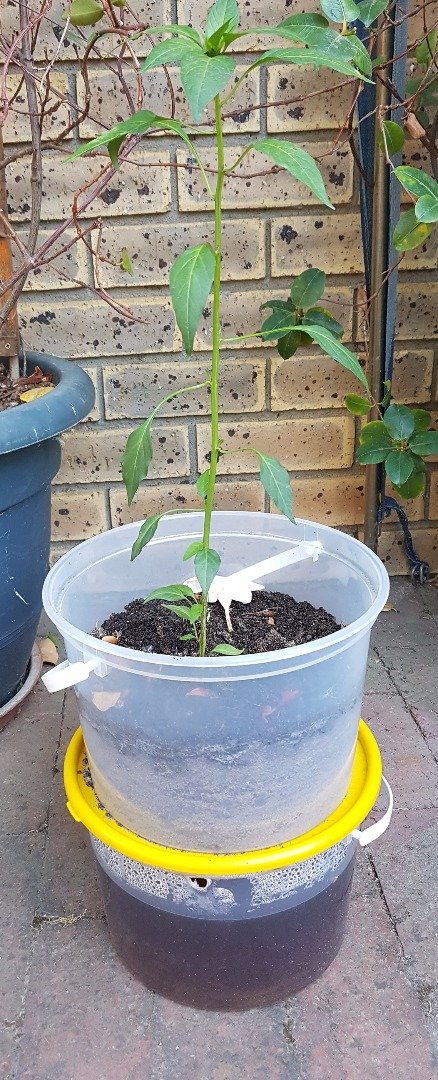
The chilli plant originally planted

I placed seeds just under the soil, see how well they have taken
So what did I do wrong? The most important is I did not have holes in the container bottom on which the soil rests to ensure the plant roots have some aeration. Also, my wicker does not reach to the bottom of the water container meaning that I can never use up the water and the water is now getting all green and ‘mouldy’. Maybe not such a big deal actually.
Encouraged by this result I decided to take the experiment a step further.
I purchased two buckets of different sizes, as well as two small buckets to use as wicker baskets.

Two buckets like the above which I had to tie together after removing the bottoms
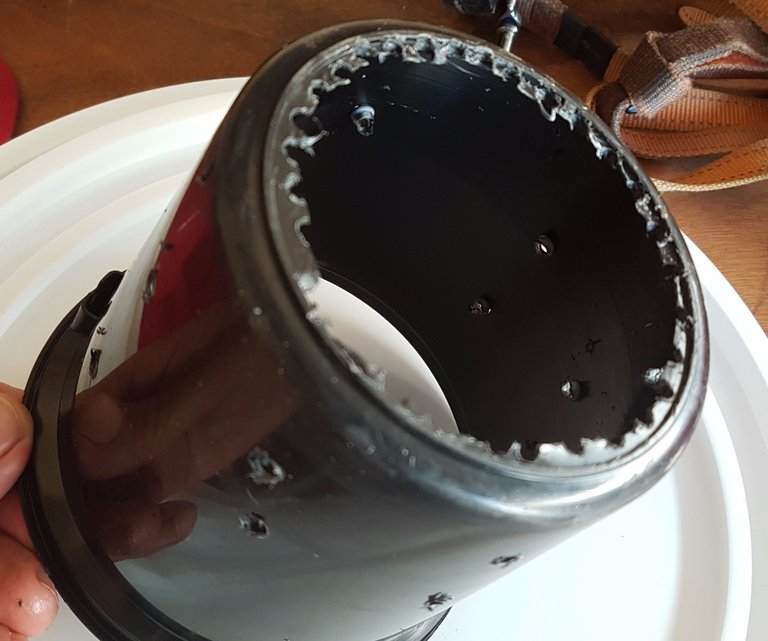
I also drilled holes in the sides ….

And cable tied the two small buckets together to form one long wicker basket. I cut a hole in the center of the one bucket lid and drilled numerous small holes in the lid. To this I attached the wicker basket. This will form the base of the growing medium.
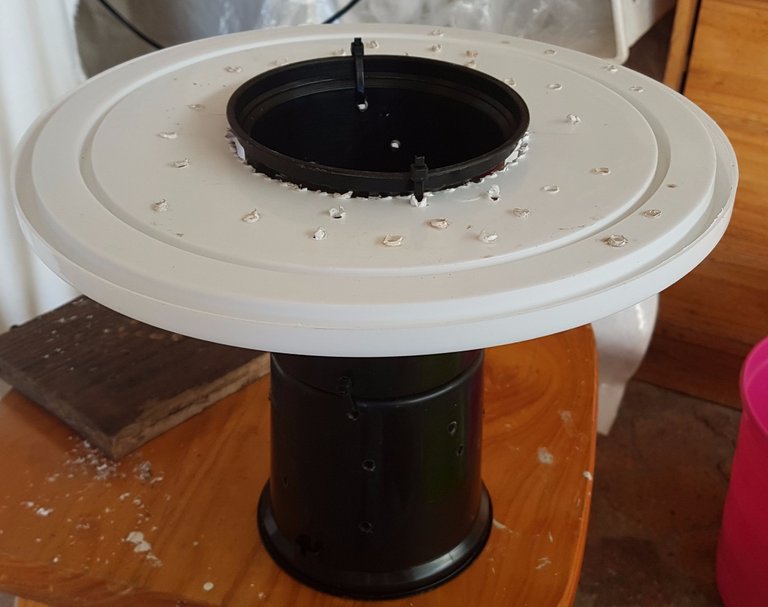
Base and Wicker
I cut another hole in the lid to thread a pipe through. This pipe will be used to feed water into the base. I lowered this lid and wicker into the bigger bucket until the taper of the bucket stopped the lid from going lower and the wicker basket was at the bottom of the bucket
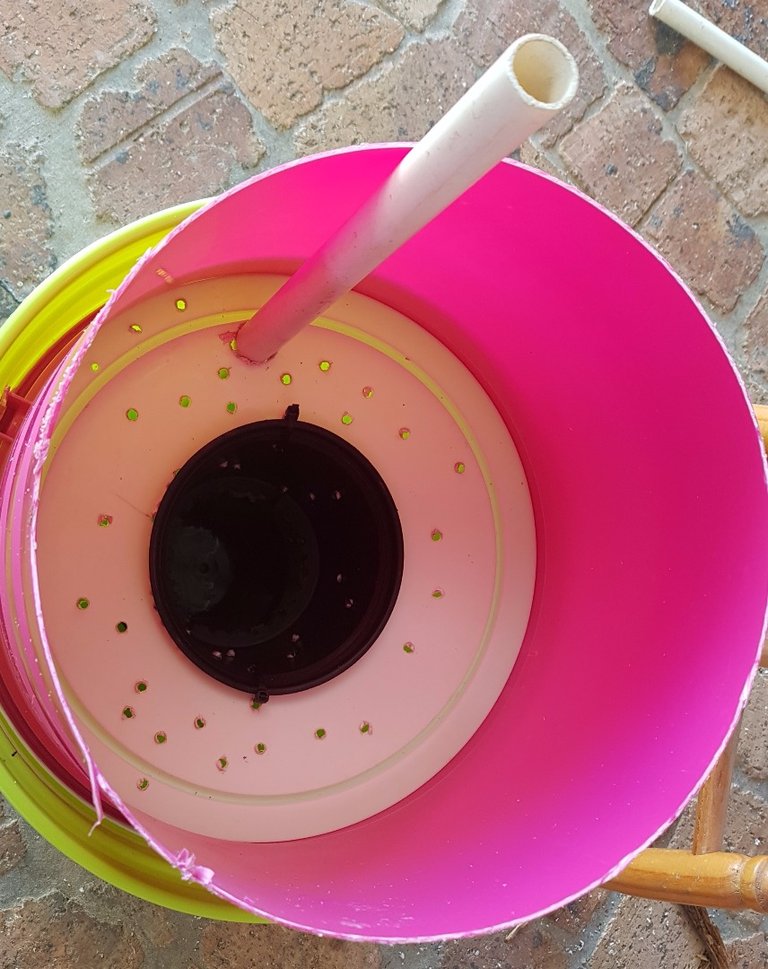
From the above picture, one can see that I then removed the bottom from the bucket and turned it upside down and placed it on the original lid… perfect fit. This will then become the ‘plant pot’
awesome colors…hopefully stimulates the plant growth..lol
I then decided to avoid the use of conventional soil and see if enough nutrition can be provided through the water. I filled the wicker with coconut peat and the pot with coir.
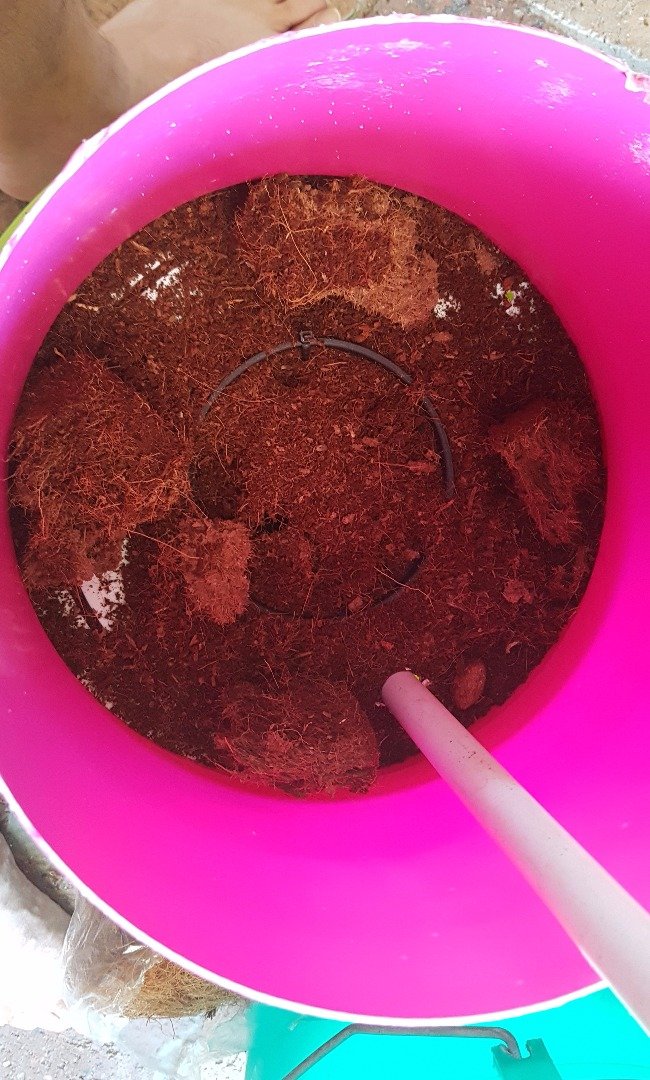
coconut peat
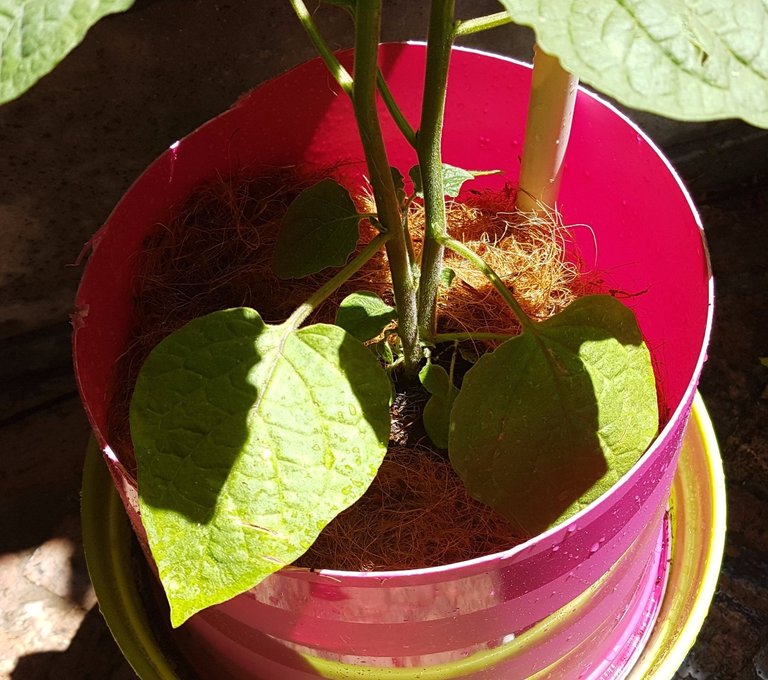
coir and the original soil which compacts the roots of the Cape Gooseberry plant
To provide some stability I added some dry soil around the base of the plant. I filled the base container with water (through the white pipe) until the water dripped out the ‘overflow’ hole (circled in the pic below)
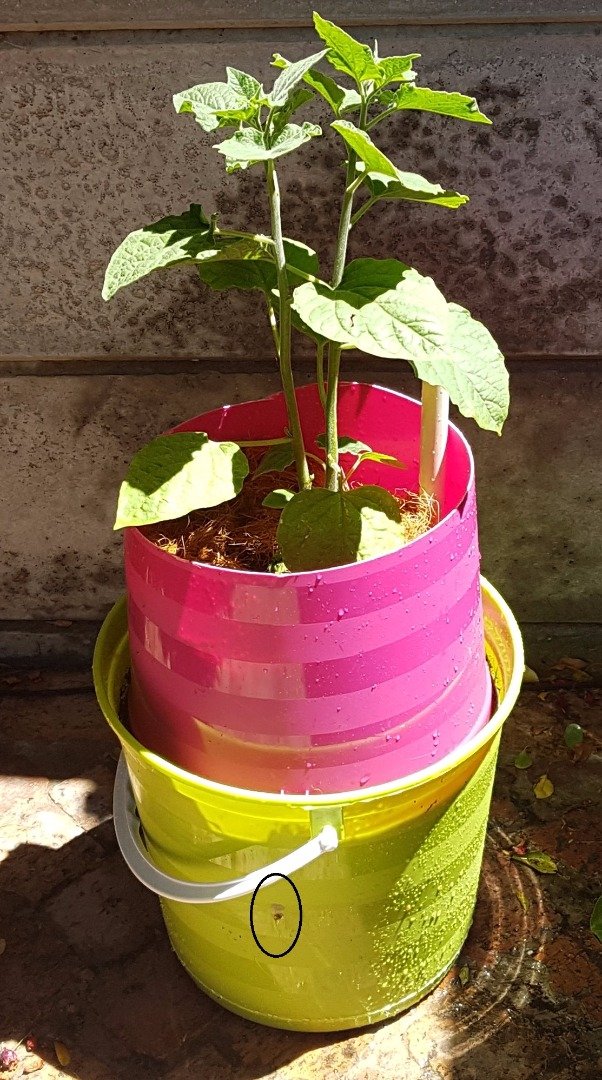
I already feel sorry for this poor plant as I think I may have sentenced him to die… or at the least a very difficult existence
What am I hoping to achieve by all this? I want to develop a means to grow optimal organic crops in a small area. I want it to be suitable for patios, balconies and such likes.
Thanks for reading!!

Hello @themagus,
Congratulations! Your post has been chosen by the communities of SteemTrail as one of our top picks today.
Also, as a selection for being a top pick today, you have been awarded a TRAIL token for your participation on our innovative platform...STEEM.
Please visit SteemTrail to get instructions on how to claim your TRAIL token today.
If you wish to not receive comments from SteemTrail, please reply with "Stop" to opt out.
Happy TRAIL!

Upvoted by @gardening-trail
Read our guidelines here. Join us In the Gardening-Trail and let's discuss Gardening Related TopicsThank you for following and upvoting @gardening-trail
smart and genius
Thank you.... unfortunately not my original thought..is an adaptation of the 'earthtainer'..thanks for taking the time to read though
Thank you again :)
A gardener cannot stop experimenting with their plants, lol. Your comment about the color of the pot may not be so far-fetched. There has been a lot of research to find that some plants are more productive with mulch of different colors, like these recommendations from Penn State University. Here's to a happy future for your plant! : )
Wow, what these people get up to. What do they mean by 'mulching' in this case? Plastic sheeting actually covering the ground? Do you know?
Yes, that's actually plastic sheeting on the ground. I can't bring myself to use all that plastic, but I see more and more of it around on our small farms here in Oregon's Willamette Valley. Some colors increase vegetation, others the fruit, and some really reduce insect problems. I'll have to get some photos this spring.
Amazing, it messes with my mind a bit as I would imagine the soil bacteria would have problems, what with heat, lack of aeration... I don't know. It just sort of defies my sense of logic.
I'm with you on that. I don't like what plastic does underneath the soil. I think it really compacts the soil, because of the lack of aeration and organisms underneath. But some folks are really big on it.
Be careful with PVC as it can leach toxins into the soil. If you were growing flowers or something it wouldn't be such an issue but with food you need to be more aware. Plastics of all kinds can have that problem, especially when subjected to heat.
Eeeeeek, very very pertinent point @blindsite... {sigh} .. Will do some more research. Thanks for the feedback.